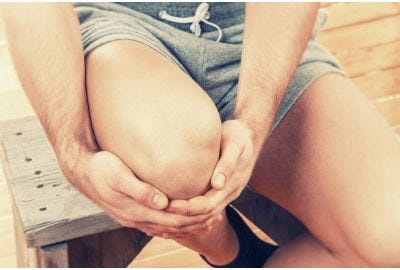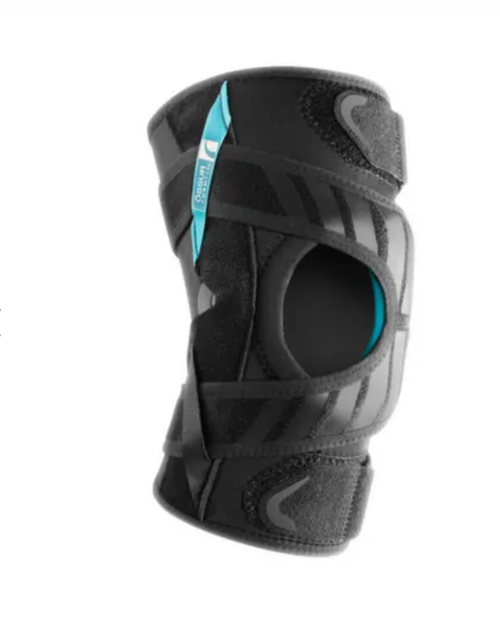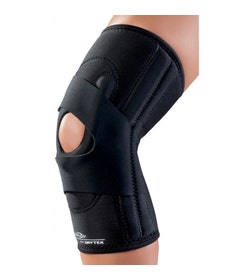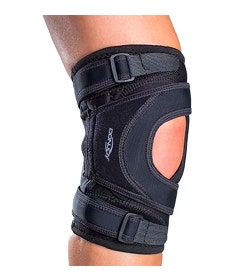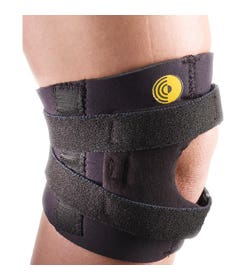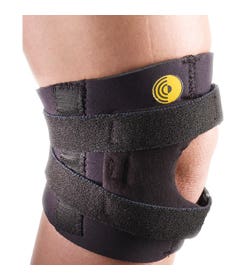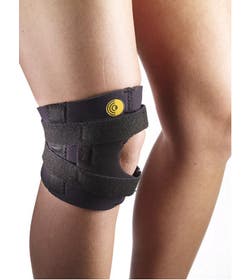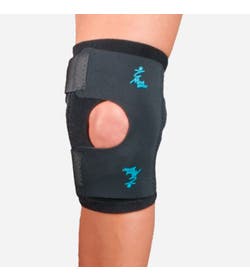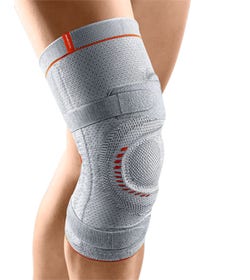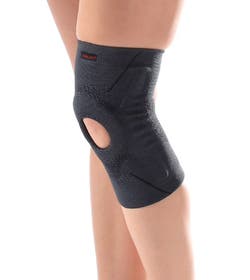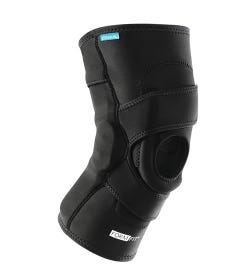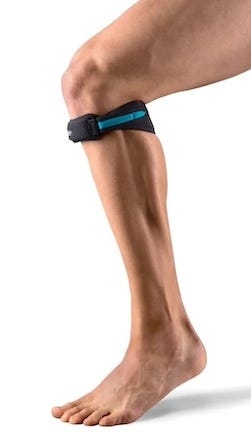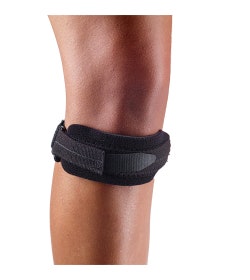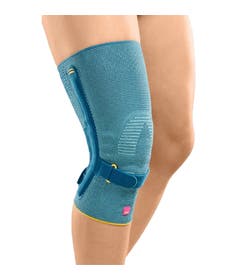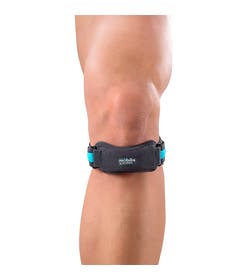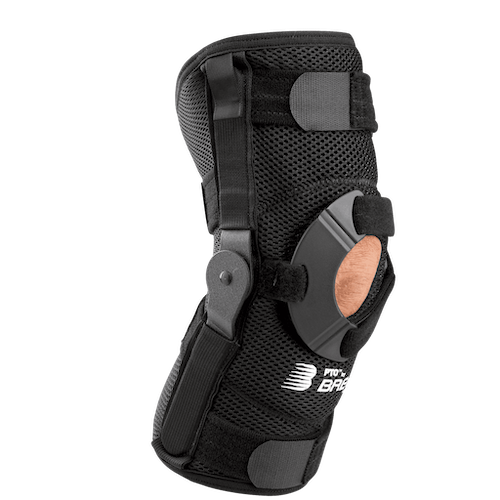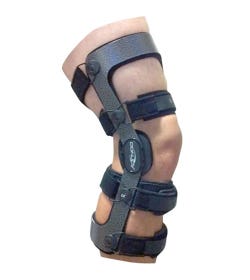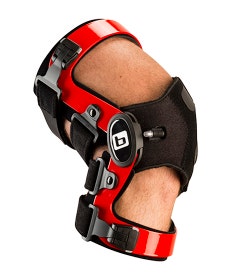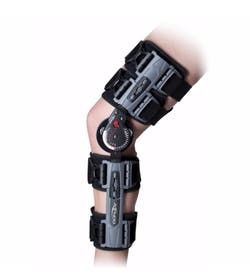updated for 2025
What's In This Post
Click to jump to section
What is the Patella?
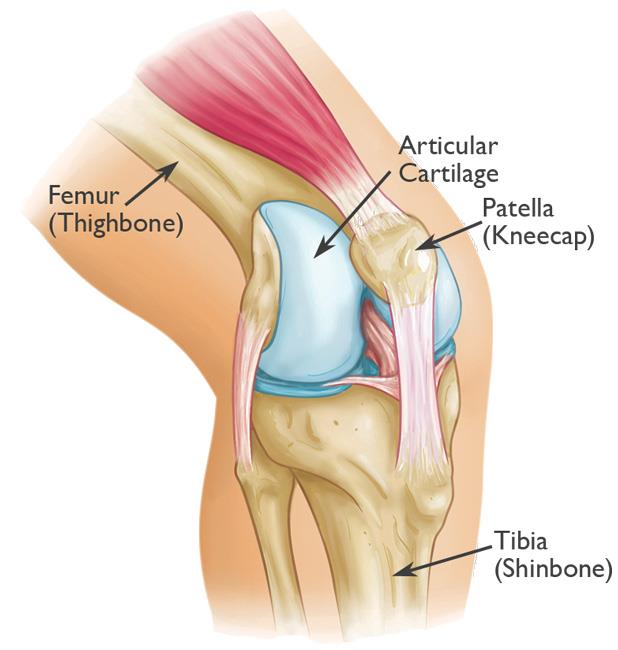

The patella, or kneecap, is a small bone located in the front of the knee joint. It plays an important role in knee stability, as it helps distribute forces through the joint and prevents dislocation.
The patella can also be a source of pain and discomfort, particularly for individuals who participate in sports or who have a history of knee injuries.
In these cases, patella stabilizers, patella straps, and knee braces can be useful tools for managing knee pain and improving stability. In this blog post, we will discuss each of these devices in more detail.
Types of Supports for Patella Related Conditions: Stabilizers, Straps and Braces
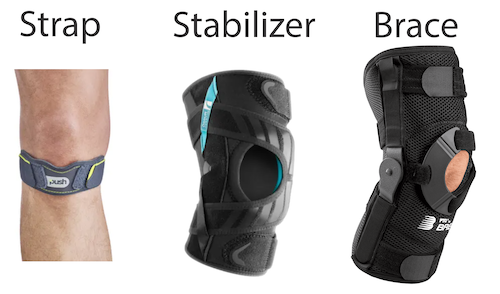

We've categorized knee supports designed to address patellar or patella-related conditions into three main types: straps, stabilizers, and braces. Each type serves a unique purpose, offering targeted support to alleviate discomfort, improve alignment, and enhance mobility. Understanding the differences between these options can help you choose the most effective solution for your specific needs. Keep reading to learn about each type.
Patella Stabilizer
Patella stabilizers are designed to provide support and stability to the kneecap.
These devices are typically made of breathable nylon or other elastic compressive materials and are worn over the knee joint. They often feature a padded ring or horseshoe-shaped support that fits around the patella, helping to keep it in place during movement.
When should you use a Patella Stabilizer?
Patella stabilizers can be beneficial for individuals with patellar instability (an unstable kneecap) and preventing subluxation / maltracking (the kneecap has briefly slid out of its normal track). With this condition, the kneecap doesn’t 'track' or move the way it should: it moves out of the natural groove at the end of the thighbone (femur) that holds it in place. Normally, the kneecap glides smoothly in this groove, allowing it to track in a straight line.
With patella instability, you may experience pain going up or down stairs, or during squatting and jumping activities. Your knee may feel it wants to buckle. You may also not be able to straighten the knee. Other symptoms include stiffness, swelling, cracking, popping, or feeling like the kneecap is catching on something or moving side to side.
Patella stabilizers are used to help manage patella instability, subluxation, and related conditions such as Patellofemoral Pain Syndrome and Chondromalacia Patella which are common conditions that fall into this category.
Stabilizers work by placing a consistent tension or 'pull' on the kneecap during flexion and extension, which realigns the patella to encourage it to be in it's proper position. They also help to improve knee joint alignment, reducing stress on the patella, and providing additional support during activities. Some patella stabilizers feature buttresses, adjustable straps, or hinges, allowing for a customized fit and greater control over knee movement.
Browse Patella Stabilizers
-
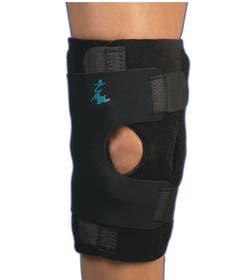 MedSpec Dynatrack with Hinges - Patella StabilizerAs low as $194.03
MedSpec Dynatrack with Hinges - Patella StabilizerAs low as $194.03
Patella Strap
Patella straps, also known as patella bands or knee straps, are another type of device designed to provide support and stability to the patella.
Unlike patella stabilizers, which typically cover the entire knee joint, patella straps are narrow bands that wrap around the patella tendon (just below the patella bone). They are often made of elastic, nylon fabric, or rubber material and sit just below the kneecap.
When should you use a Patella Strap?
The primary purpose of patella straps is to help reduce pain associated with conditions like Patellar Tendonitis: a common overuse injury, caused by repeated stress on the patellar tendon resulting in tiny tears in the tendon. The tears cause pain and reduced function from inflammation and weakening of the tendon. Over time, the pain worsens and starts to interfere with playing sports and daily movements such as going up stairs.
Knee straps are also used in the treatment of Osgood Schlatter Disease (a common cause of knee pain in growing adolescents). This pain is a result of the bones developing faster than the muscles/soft tissues around them.
Knee straps work by applying gentle pressure to the patellar tendon, helping lessen the amount of pressure on the patella tendon caused by movement (with Patellar Tendonitis) or reducing the pull on the patella tendon insertion (with Osgood Schlatter Disease).
Some individuals find that patella straps are particularly helpful during activities that involve repetitive jumping or running, as these activities can place significant stress on the knee joint. They are also used for everyday use.
Browse Patella Straps
Knee Brace with Patella Support
Knee braces with patella support are similar to patella stabilizers in that they provide support and stability to the knee joint.
However, unlike patella stabilizers, which are primarily designed to more gently align the patella, full knee braces are more robust and able to provide protection against patella dislocations and ligament injuries. They often feature additional straps or hinges that control knee movement.
When should you use a Knee Brace?
Knee braces with patella support (or a more heavy duty knee brace style patella stabilizer) can be useful for individuals with recurring Patellar Dislocations. A patella dislocation occurs when the kneecap moves sideways out of its natural groove at the knee joint and will need to be popped back in place to regain range of motion.
Some people have tendons and ligaments that hold the kneecap in place that are loose and unstable. This might be caused by a previous acute injury (force, from a collision, a fall or a bad step) or by another preexisting condition. An unstable kneecap will dislocate more easily. A dislocated patella will cause buckling of the knee, intense pain, swelling, bruising, and an inability to walk. The kneecap will be visually out of place.
Knee braces with patella support (designed to prevent dislocation) place a dynamic pull on the patella during extension to prevent derailment. They have strong straps that have a buttress effect around the patella for greater control. They also include dual hinges on both sides of the brace to support the entire knee joint, limiting harmful movements, and protecting the patella and knee joint from further damage. These braces allow the ligaments and damaged cartilage to heal properly and reduce the risk of a further dislocation before the knee has healed completely.
If you've previously experienced ligament damage in your knee joint, we would recommend a rigid framed brace as they have stronger hinges and frame to offer more support. This provides side to side protection, and it can assist individuals who experience hyperextension of the knee (with their ROM capabilities). A good example of a rigid frame brace with patella support is the DonJoy Defiance which is a ligament brace that can also provide patella support with an optional attachment: the DonJoy Tru-Pull Attachment.
Full knee immobilizers may also be useful for those currently rehabilitating from a Patellar Dislocation. Please consult your physician/physiotherapist for your rehabilitation protocol.
Browse Knee Braces with Patella Support
Patella stabilizers, patella straps, and knee braces are all useful tools for managing knee pain and improving knee joint stability. Individuals who are experiencing knee pain or instability should consult with a healthcare professional to determine the most appropriate treatment plan, which may include the use of one or more of these devices. With proper use, patella stabilizers, patella straps, and knee braces can help individuals maintain an active lifestyle and reduce pain and discomfort associated with patella related knee conditions.

